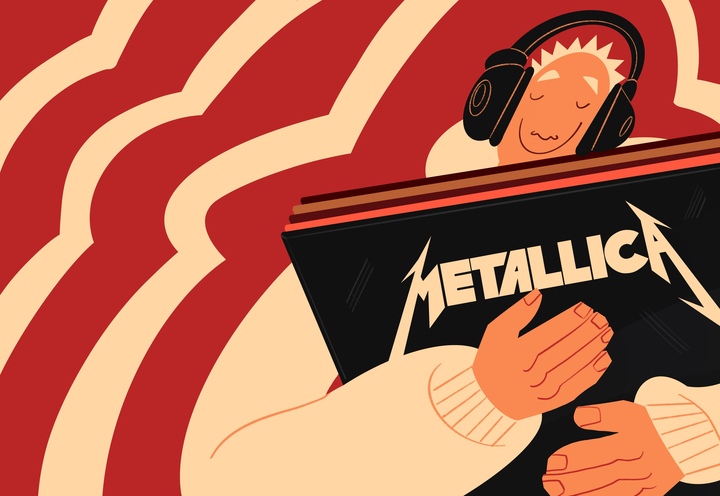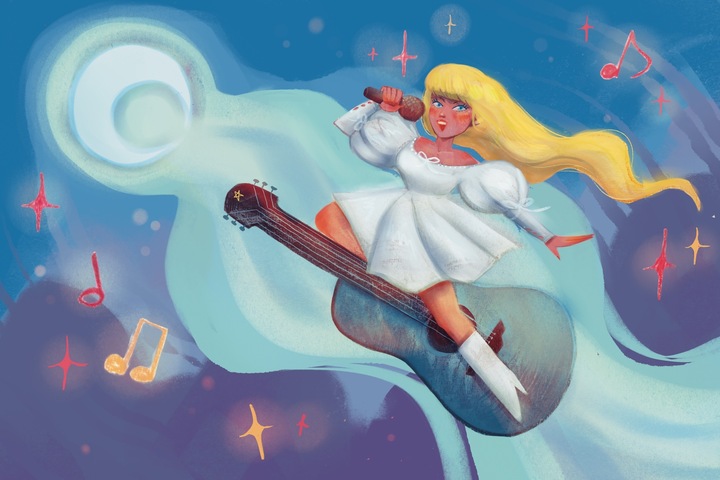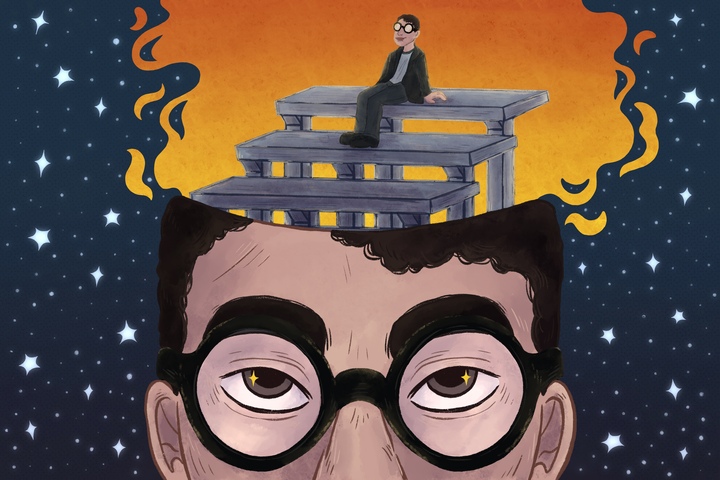In a varied festival of indie, punk, and jam bands, Kristine Leschper’s unique brand of multi-instrumental art pop shone brightly and sweetly in the midst of it all. Like a lighthouse to a safe harbor, she and her backing band beckoned listeners into an intimate and warm atmosphere to combat the cool night. Here she sat down with former SCAD Radio Content Director Alex Holmes and current Music Coordinator Hailey Feller to discuss her music, live performance style, and creative process.
Read the Transcript and listen to the audio below
Kristine: Yeah, so with the pandemic being such an internal, domestic, house-ly time… to be out and on stage and in front of people again performing this new music is so overwhelming, so new.
Alex: Kinda just diving right into the experience.
K: Exactly, but it was super rewarding. We had such a good time.
Hailey: It was amazing seeing it!
Alex: For sure. Real quick, could you introduce yourself and the band and sorta what you do?
K: Oh yeah! My name is Kristine Leschper, I have a wonderful band, we play music. I have a record called “The Opening, or Closing of a Door”. It’s my sorta debut– it’s my first album as a solo act, but I’ve put out other material under the moniker Mothers. It’s good to be here talking with you guys!
A: Thank you so much! To get back to performing, how was it coming back?
K: So good to be back in Georgia honestly, that was a big selling point for this festival. We drove 12 hours to get here and we’re driving 12 hours to get back home tomorrow so we really wanted to be here, it just felt like the right place to do my first show as a solo artist. I feel like we had a really warm welcome, a homecoming!
A: It’s so special that this is like a moment for you guys, most bands are going somewhere else since it’s the Stopover tour.
K: Yeah, we’re not going to SXSW, this is our final destination.
A: Savannah kinda feels like a place for a lot of people where it’s more a skip-over than a stopover, which is kinda unfortunate. So it was great to see your guys’ passion onstage, it was very apparent that you guys were so excited to be here. Your performance was interesting, there was going on there. What inspired some of your choices with the instrumentation, the clapping…?
K: The clapping started off as just a recording technique, just to get some syncopations because I’m not really a percussionist, and hand clapping was something I heard in some flamenco music I was listening to. I found it super inspiring, like ‘I can clap.’ Not like a flamenco artist, they’re doing next level stuff, but I figured I can make patterns with my hands so that was very accessible. So as I was demoing I just added claps, maybe as a placeholder, but I ended up really liking the way they sounded. I liked that it became sort of a group activity, to clap with other people, it felt really good. And the other instrumentation, we’re just trying to keep it really fun and dynamic. There are tons of different ways you can approach live sound, and it was difficult to get all the sounds on the records in a live format since the record was a lot of overdubbing, layering, it wasn’t like live. So that’s been a fun challenge, just figuring out how many different sounds we can get with just five people on the stage. And as you saw, everyone’s very busy working a lot of jobs. I’m a very curious person, and to just have all these new things to play with is great.
A: Something I think is really tough to capture on stage, especially in a venue with this much space, is a sense of intimacy. I think you guys did a great job of capturing that and part of that was things like the nutritional yeast shaker on stage and stuff like that. Could you speak a little about that?
K: On the nutritional yeast shaker and intimacy? [laughs] Well something great about making the record is my friend and collaborator Garrett Burke, who’s on percussion, makes a lot of his own percussive instruments like shakers and bells and anything that can make sounds. He’ll go to the thrift store and get a big bag of buttons and tie them together to see what they sound like. So it’s just this ethos of discovery, like “what does this sound like?” and that keeps things fun and interesting. I love the nutritional yeast shaker. It’s weirdly become a big talking point on the record. As far as the intimacy of it all… I was very nervous tonight, and in the past I felt a need to have a cool kind of distance from the audience. I didn’t think anyone could see that I was nervous, like it would make me a bad performer. But tonight I’m learning to be like “I’m nervous, I’m cold, it’s my first show in 3 years, what do you guys think?”
H: I think it shows humanity.
K: Yeah, it’s like I’m nervous, I’m just a person. I think it’s cool to just be a person doing things with other people, and it’s like we’re all on the same level. It’s supposed to be a shared experience, and I want to foster that environment.
A: That’s awesome. What are some of your lyrical inspirations?
K: That’s hard, that’s a tricky one. I read poetry sometimes. My early songwriting was very influenced by poets like Anne Sexton, these kinds of confessional poets, like intimate and internal. Like E E Cummings blew my mind, and I was just like “wait. There are no rules? You can do whatever you want?” so that was really formative in my writing. It’s hard to say, but recently I’ve been feeling very inspired by the poet June Jordan who’s also an activist. Her poetry is very liberatory and celebratory while also acknowledging the imperfection and suffering in the world, which is, I think, just the best thing that art can do. To just say that there are so many things to celebrate and we need to do that together and enjoy each other, but also acknowledge the thighs that are really messed up. So she’s been a huge inspiration. That’s a question I should spend more time with, that’s hard.
A: As our final question, coming from an art school background, how does working as a visual artist impact you working as a musical artist?
K: I think it allows me to zoom out a little bit. Because my foundation in art school helped give me a background that allowed me to be critical of myself without being demeaning. How to step back and be like, something’s working here but something’s definitely not working. So that background in critique and collaboration definitely helped me to look at my work that way. Something else is that I think of music very visually, like I like to think about music and recordings in particular as a sculpture. So it’s kind of like you can visualize all the different frequencies, which are almost topographical when you think of all the different ways something can enter and leave a song. So yeah, I think of recordings as sculpture in the round.
A: Thank you so much for talking with us!



